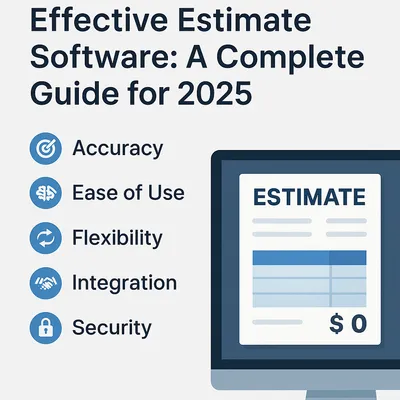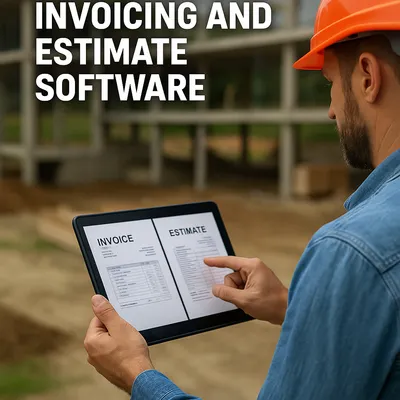Ways to customize your estimating software for different market needs
Customize your estimating software to improve budgeting, scheduling, and resource management across different industries and project types.
by
Quickadmin • 11/11/2024
Ways to customize your estimating software for different market needs
One of the reasons why construction estimating software is so effective is its ability to tailor their tools and features to the specific needs of the project’s market. This means that, for any company wishing to ensure the success of their unique projects, a one-size-fits-all approach to estimating software is not enough.
Each project has special requirements, and using the same estimating software without customizing it to fit different market needs can be limiting. That is why, in today’s article, we will explore different ways an estimating software can be customized to better meet market demands.
This will help you understand the full potential an estimate software can offer when tailored to your specific needs, allowing your company to enhance budgeting, scheduling and resource management ensuring more successful outcomes.
How to customize your estimating software?
Customizing an estimate software involves tailoring it to fit specific business demands, enhance user experience, and improve accuracy. Here’s how you can get started:
1.- Identify project’s goals
Estimating software is a digital tool used to calculate expenses associated with a project. Whether they are materials, labor rates, equipment or any other resource needed for its development, its goal is to offer a solution for better budget management by providing accurate and efficient cost projections.
Now, consider that while each cost is important, not every industry needs to focus on each one equally. For example, in construction projects, materials prices might play a more significant role in cost estimation than in software development, in which labor rates for skilled professionals have a greater impact on the overall budget.
This highlights the importance of clearly identifying a project’s goals as it allows businesses to customize estimating software to prioritize the most relevant cost factors for their specific industry. By doing so, they can improve the accuracy of their projections, streamline the budgeting process, identify potential risks and increase profitability.
2.- Enable locations options
A company can customize its estimation software by adapting it to regional differences by configuring currency, units of measure, language, and taxes. This ensures that the company meets both market requirements and compliance regulations -an essential factor for multi-regional operations.
By aligning the software in this way, companies can generate accrued estimates that reflect local costs and regulatory standards, minimizing the risk of financial discrepancies or legal issues. Additionally, language and unit adjustments enable teams to work more efficiently across regions.
3.- Develop templates and cost libraries
As we mentioned, in any industry, each estimate contributes to the total cost, but not all carry equal weight. This difference is often reflected in how information is displayed on reports and template projects.
It is natural to have a wide selection of templates tailored to different types of project parameters, industries, and overall market needs. These templates benefit the user experience by allowing the focus to be placed on the most critical cost factors and metrics -such as type of materials, cost, and labor rates in residential projects, for example.
Having a catalog of preconfigured templates saves time and ensures consistency throughout the estimation process. The same applies to cost libraries -a type of database containing materials, labor rates, and more - making it easy to pull standardized data into estimates.
Together, these templates and cost libraries help meet different market needs by enabling quick adjustments to align with industry standards, regional pricing variations and specific project requirements.
4.- Configure custom formulas
Customs formulas allow users to create specific calculations for cost estimates that align with their unique pricing structures including fixed costs, variable costs, markups, and taxes. But why are they necessary?
Markets vary widely in how they calculate estimates. For example, the manufacturing industry often requires complex calculations that go beyond standard costing, as they need formulas to estimate costs based on material density, weight, and production time. Other projects might rely on variable pricing models, such as bulk discounts or tiered pricing that adjusts with order volume.
Custom formulas also make it easy to update estimates automatically based on shifting factors, like fluctuating material prices or changing labor rates. This dynamic capability allows estimates to remain accurate and responsive to real-time market conditions.
5.- Customized roles
Each market often has unique workflows, and configuring custom roles allows businesses to align the software with these workflows for improved productivity and security.
By setting up custom roles, companies can control access levels and assign specific responsibilities based on each team member’s role in the project. This way, project managers may have access to high-level budgeting and reporting features, while certain team members might only need access to task tracking.
This level of estimate software customization ensures that each user has access to the tools and information they need to perform their job efficiently, without unnecessary distractions, or security risks. Communication can even be more effective as customs roles allow users to share information with the right team members.
Customization allows users to fully unlock the potential of estimation software. Whether you’re currently using it or plan to do it in the future, we encourage you to explore these customization possibilities to ensure the success of your project and enhance your overall experience. For more useful content, please feel free to visit our blog or reach out to us through our contact form for more detailed information.



























